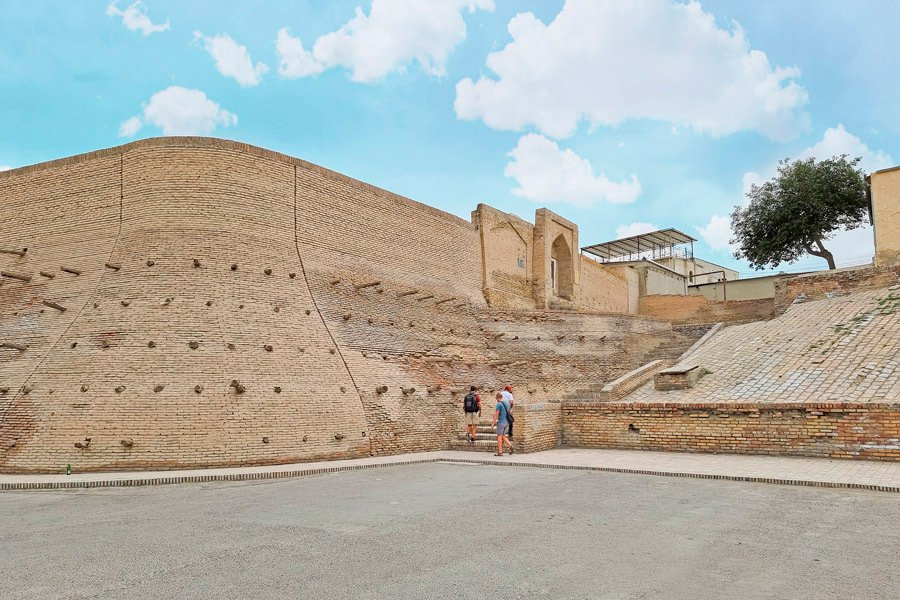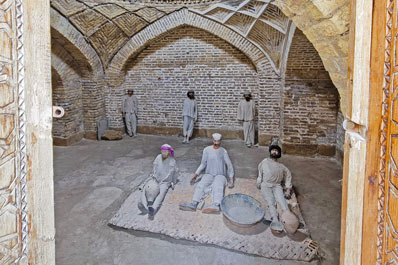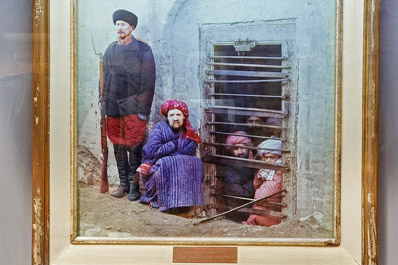Zindan - Emir, Bukhara

One of the most mysterious sightseeing of Bukhara is Emir's prison known as Zindan, constructed in 18th century. The word "zindan" derived from Persian and has following meanings: "prison", "dungeon", "a hole for prisoners confinement". The prison has been constructed in the northwest of Shahristan (center) and consisted of several debt chambers, punishment cell and underground dungeon which have been laid out from a burnt brick about 5 meters in diameter and 6,5 meters depth.
Basically there were debtors and infringers of religious instructions in Zindan of Bukhara. The prison itself reminded a small fortress - brick external walls, a ladder to entrance, made in the form of an arch. The prison could contain no more than 40 people, and it shows that the crime rate in Bukhara that time was the lowest.
The Bukhara Khanate was the state where religion had the highest authority, and, as consequence, demanded strict performance of all instructions of Islam which number included daily fivefold prayer (namozi pandjvakti).
In Bukhara fulfillment of this duty by citizens was under vigilant supervision of a special official - rais, who went around the city with his retinue which included a special whip holder (darradast). Early in the morning rais visited one of parish mosques, checking, whether men from district come to the first prayer made before the dawn (namozi bomdod). Having enquired at the imam which of parishioners is not present in his place, rais sent his people to the house of the guilty and if there was no proper explanation the man would be punished. Rais could be limited to severe reprimand, or, without having found circumstances extenuating fault, ordered whip holder to award negligent with several lashes.
Malicious deviation of religious duties led to strict punishment, up to imprisoning in Zindan. During the day when the majority of men were busy at work and could not be present on namaz (Mohammedan prayers) at a district mosque, only aged people who stayed at home could pray.
The mosque was important not only as a place for prayers, its role in the public life of the district was particularly important. Unlike other cities of Central Asia in Bukhara there was no district choyhona (teahouse) which would be a kind of clubs. Custom of having long conversations, sitting in choyhona was popular only in Tashkent and Fergana valley. In Bukhara choyhona was the place where only boiled water was on sale and each house sent for it there. In Bukhara choyhona, located at markets, only visitors who did not have a house drank tea and had a snack. Local Bukhara citizens considered it indecent. For this reason mosque was a unique place where there could be a constant dialogue between men - inhabitants of district. There people regularly met with each other, quite often they stayed for a short one hour break between two afternoon prayers. Spending this time in conversations, they discussed issues connected with life in district; in a mosque there were elections of district administration; Emir's officials came there when they needed to talk to people from the district.
Thus, not despotic board and fear of tortures in Zindan but the sated religious life mentioning each aspect of human life was the keystone to success in struggle against crime.
Today Zindan of Emir is transformed into a museum for tourist excursions. Museum exhibits in one of rooms tell about legal proceedings in Bukhara 19-20th centuries. In the top part of Zindan there is a narrow corridor for prisoners walks, a gravestone and the tomb of prisoners "saint" - "Kuchkar-Ata" (8th century).



